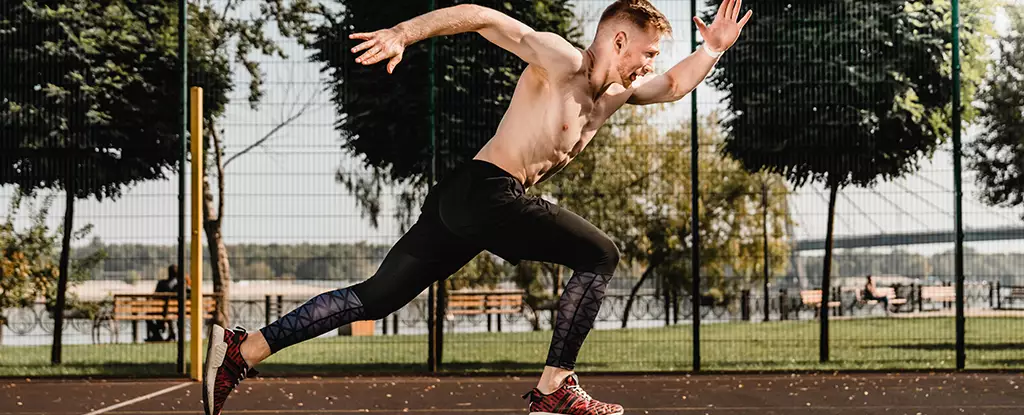In a world fixated on peak performance and high-intensity workouts, new evidence raises eyebrows about the potential downsides of extreme physical exertion on our immune systems. A recent 2023 study from the Pacific Northwest National Laboratory (PNNL) highlights an unsettling truth: intense exercise may temporarily compromise the immune response, particularly in those who regularly engage in vigorous training. As someone who enjoys breaking personal records in the gym, this research has made me reconsider the balance between ambition and well-being in our fitness journeys.
The PNNL study examined over 4,700 post-exercise fluid markers from 11 firefighters who underwent a demanding 45-minute workout involving heavy gear and challenging terrain. The results indicated a reduction in inflammatory molecules aimed at combating infection levels immediately following intense exercise. While elevated fitness levels are typically associated with enhanced health outcomes, this transient immune suppression points to a potential risk in competitive or high-demand physical environments.
The Paradox of Physical Fitness
For the fit and active, the notion that a rigorous workout could lead to an increased susceptibility to viral respiratory infections contradicts conventional wisdom. Moderate physical activity is lauded for its immense benefits, fostering resilience and a fortified immune system. Yet what remains contentious is the claim that excessive, strenuous workouts could alter our immune response unfavorably. The findings suggest that while long-term benefits of exercise are undeniable, the immediate aftermath of exhaustive physical activity may carry its burdens.
Ernesto Nakayasu, a biomedical scientist at PNNL, articulates this paradox succinctly; “People who are very fit might be more prone to viral respiratory infection immediately after vigorous exercise.” This assertion is particularly thought-provoking, as it challenges the widely held belief that being fit universally shoulders one against ailments. Could it be that in pushing our bodies to excel, we inadvertently expose them to vulnerabilities?
Investigating Immune Dynamics Post-Exercise
The research team, including bioanalytical chemist Kristin Burnum-Johnson, aimed to discern the intricate changes within the body following intense exercise. Their analysis revealed a notable decrease in inflammatory markers alongside an increase in opiorphin, a molecule that promotes blood vessel dilation. The implications of these shifts are far-reaching, perhaps indicating adaptation mechanisms in response to heightened energy demands during strenuous routines.
Yet some researchers debate whether these immune system changes signify suppressed immunity or simply a state of heightened surveillance and regulation. This discussion underscores the complexity of the immune system’s behavior under physical stress, revealing layers of nuance often overlooked in discussions about exercise.
Through their study, the scientists also detected alterations in the participants’ oral microbiome, possibly as a counteraction to the temporary immune suppression. However, the presence of increased antimicrobial peptides did not yield a protective barrier against bacterial pathogens, raising questions about the limits of our body’s innate defense mechanisms. The impact of these findings is significant, suggesting that even when our biology intends to adapt and protect, it might not always succeed.
Implications for Athletes and Emergency Personnel
For elite athletes and first responders, whose careers rely on physical excellence, understanding the implications of these findings becomes crucial. While rigorous fitness regimes are essential for operational effectiveness, the risks of potential immune vulnerability following high-intensity workouts must be acknowledged. The goal should not only be to excel in physical feats but to sustain health in the long run.
As the study emphasizes, further research across varied populations is necessary to bolster these findings’ generalizability. The current focus on healthy, active males limits the exploration of how these immune responses might manifest in women or individuals with differing physical capabilities. Recognizing the complexities within the body’s reaction to exercise could pave the way for more tailored fitness protocols that prioritize health alongside performance.
This research serves as a wake-up call for exercise enthusiasts who believe that “more is always better.” While embracing the intensity of workouts can foster growth and achievement, it’s vital to remain vigilant about our bodies’ responses. Balancing ambition with awareness of immune health may ultimately be the key to sustainable athletic performance and overall well-being. As we relentlessly pursue excellence, let us also nurture the intricate systems that allow us to thrive.

